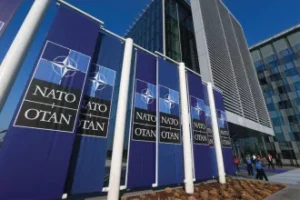THE last couple of weeks were pretty interesting. A lot of things happened, but two of the most striking events that are in many ways connected are first, the protest demonstrations and prayer rallies against the expanded EDCA (Enhanced Defense Cooperation Agreement) not just in Manila but particularly in Cagayan province, where two of the four identified new EDCA sites are situated. The second was the nerve-wracking near-collision of two coast guard ships of the Philippines and China, which happened more than a week ago.
Opposition to EDCA
As far as protest actions and rallies in opposition to the expanded EDCA are concerned, they are pretty much extensive and widespread, more than what the Philippine and Western media have reported. For instance, thousands of people from various sectors joined the prayer rally and candle-lighting ceremony at the Rizal Park of Tuguegarao City on April 17 to express their dismay and resistance to establishing two US military bases/installations in Cagayan province.
Cagayan Gov. Manuel Mamba said that the expanded EDCA with two identified EDCA sites for his province was undesirable for it would negatively impact the socioeconomic progress of the province and, for the most part, these EDCA bases are magnets for retaliation if a military confrontation were to occur in the Taiwan Strait and/or in the contested waters of the South China Sea (SCS). Mamba said, “Additional EDCA sites are obstacles to the economic development of Cagayan. Foreign investors from China, South Korea, Japan, and even Taiwan will be afraid of Cagayan because of the fear that Cagayan will become a stronghold of America.”
Indeed, the prayer rally/vigil in Cagayan was a glaring and high-flying expression and display of the collective opposition of the “Cagayanons” against the expanded EDCA, particularly the deployment of US boots in Cagayan. It was also, in many ways, an articulation of support and solidarity with anti-EDCA Governor Mamba. The prayer rally in Cagayan was thus far a strong message and call addressed to the national government, saying that many people are resisting and are against the expanded EDCA.
Coast guard ships’ near collision
On the other hand, another tense moment just happened in the contested waters of the South China Sea more than a week ago involving the Philippines and China. A Chinese coast guard ship allegedly blocked and deterred the BRP Malapascua, a Philippine Coast Guard vessel that was trying to enter Ayungin Shoal or Second Thomas Shoal last April 23 April 2023, forcing the PCG vessel to discontinue its course, that almost led to a terrifying and nerve-breaking near collision. Thankfully, no one was hurt in the incident.
But aside from the chilling near collision, what’s most fascinating to note is the fact that the PCG vessels were carrying a small group of journalists. According to the report, on board the two PCG ships, BRP Malapascua and BRP Malabrigo, were a bunch of local and foreign journalists. It should be noted that the area of Ayungin Shoal is under the control of the Chinese.
What were the PCG vessels trying to accomplish by entering the Chinese-controlled area of Ayungin Shoal? Why bring on board a bunch of journalists in the disputed SCS when everyone knows for a fact that the site is sensitive and such action may provoke a serious skirmish between the two sides? Is the recent incident in the SCS another case of trying to justify the expanded EDCA; the most extensive Balikatan exercises between the US and Philippines troops; the planned joint patrol in the SCS between the US and the Philippines; and the possibility of establishing additional EDCA sites other than the nine in the future, which the Armed Forces of the Philippines (AFP) is considering on the pretext that these US military bases will enable a “360-degree protection” of the country?
Consequently, the incident in the SCS intensified the already challenged and tension-driven political relations between the Philippines and China, with the Philippines and the US calling Chinese coast guard’s recent action in the SCS vis-à-vis the PCG as aggressive.
But come to think of it, anyone with a clear mind can figure out that the recent incident in the SCS between the Philippines and China was neither coincidental nor accidental. From the looks of it, it seemed on the part of the PCG it was somewhat a calculated move just when the most extensive Balikatan exercises were still ongoing and based on the SCS Probing Initiative report posted on Twitter: “USN, USAF, US army and US Marine have deployed at least 67 military aircraft (Types: P-8A, C-12U, UC-12W, C-17A, KC-46A, C-12, C-130, C-20G, C-32A, C-37A, C-40A, C-5M, C-146A, UC-35A, UC-35D, UH-60M, UH-72A, CH-53E) over the Philippines during the Balikatan 2023 Exercise between the Philippines and the US from 11-28, April 2023.”
What a bizarre strategy on the part of our coast guard and the current Philippine administration, staging a scenario with the objective and end result of provoking China to make a move for the journalists to cover and gaslight the incident, painting and shaming China internationally as if it would work and China would back off while threatening a possible military breakout in the SCS, endangering the peace and stability of the Asia-Pacific region, the SCS, and of the Philippines. This was a crazy, reckless and imprudent move by the PCG.
Conclusion
In retrospect, with the expanded EDCA, it is imperative for the Marcos administration to listen to the voice of the Filipino people, especially the Cagayanons. The Cagayanons are mainly against the fact that two of the new EDCA sites will be situated in their province.
Moreover, on the issue of both EDCA and the contested waters of the SCS, the Philippines and the Filipino people must make a conscious effort to decide which is more important, to have a mutually beneficial pragmatic cooperation with China and resolve the differences and conflicts, particularly in the SCS, through peaceful and diplomatic means, or to be used by the US, an external power, as cannon fodder in its confrontation with China as the major power competition and rivalry between China and the US continue to intensify and accelerate.
The answer to this question is for Filipinos to think about, comprehend and reflect on. But as far as I am concerned, there’s no doubt that to fight for what is ours and what belongs to our country is an act of patriotism and nationalism, which is no doubt admirable. Nevertheless, we should do so based on facts and realities on the ground because doing otherwise is akin to fooling ourselves, and I guess we don’t want that. In pursuing our claims, we should also think of how best to do it without endangering the region and the country, not placing the country in a compromising and precarious situation that will cost us lives and the country’s survival.
Source: The Manila Times
https://www.manilatimes.net/2023/05/04/opinion/columns/more-than-meets-the-eye-edca-and-near-collision-of-ph-and-chinese-coast-guard-vessels/1889785



